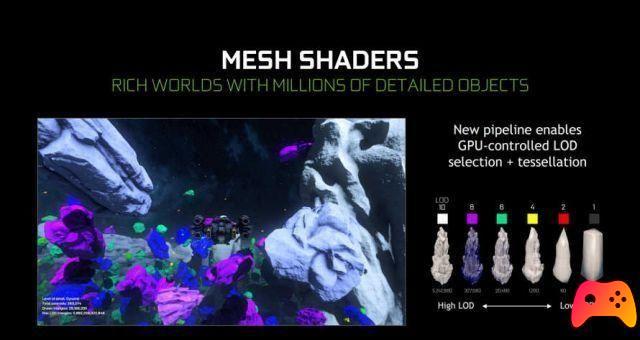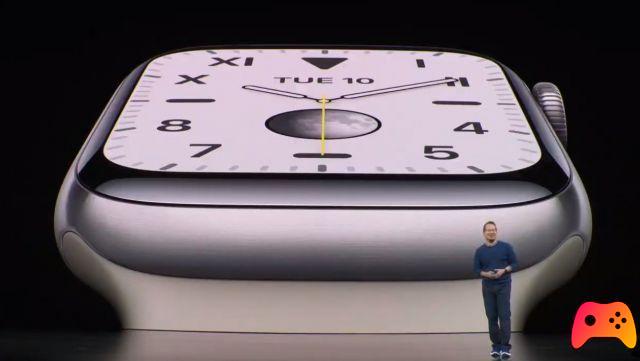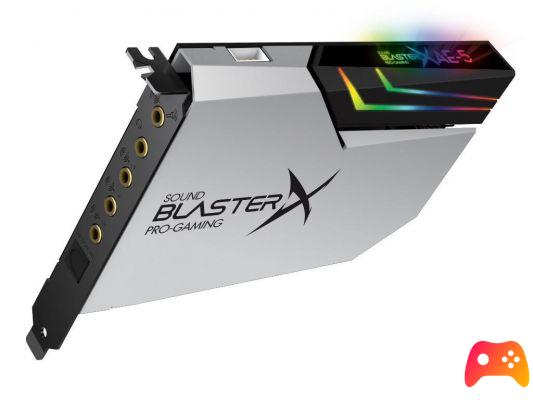Microsoft has finally released the logo DirectX 12 Ultimate. This is not a new API with new features, but rather a differentiator for graphics cards and game consoles that support four key modern features of DirectX 12. This allows consumers to recognize the latest and upcoming GPUs and distinguish them from some DirectX 12 on previous GPUs, released in mid 2010. In order for a GPU to be eligible for the DirectX 12 Ultimate logo, it must have thehardware acceleration for ray tracing with DXR API, it must support Mesh Shader, Variable Rate Shading (VRS) e Sampler Feedback (all four characteristics therefore). The next Xbox Series X console features this logo by default. Microsoft has made it perfectly clear that the DirectX 12 Ultimate logo is not intended as a compatibility barrier and that these games will also work on older hardware. If you thought you had to put your hand to your wallet to avoid not being able to play the new titles, rest assured because compatibility is ensured.

In purely technical terms, DX12 Ultimate not a big step up from the DX12 standard, the graphics API first released in 2014, however it brings together a number of software advancements such as Ray Tracing 1.1 which now no longer requires the ping GPU of the CPU, which will make it much easier to optimize games for the upcoming Xbox Series X and the latest nvidia and AMD graphics cards. At the same time, the API also keeps support for older PC and Xbox hardware intact.
At present, in fact, the series Radeon RX 5000 based on "Navi" are "obsolete", just like some Turing cards in the series GeForce GTX 16. At the moment, the only product currently available with the DirectX 12 Ultimate logo is the series GeForce RTX 20- di NVIDIA e TITAN RTX, as they support all the functions just mentioned.

Microsoft's announcement of the new standard sparked reactions from NVIDIA and AMD. NVIDIA has reason to assume that its GeForce RTX 20 series from the third quarter of 2013 is already certified with the DirectX 12 Ultimate logo. AMD, on the other hand, is fully satisfied that Xbox Series X has this certification, as its upcoming RDNA2 graphics architecture powers the console's GPU. At this point we can be sure that the next generation of Radeon RX graphics cards will feature the key features of DirectX 12 Ultimate. Intel hasn't posted any reactions to this development, since “Ice Lake” supports VRS tier-1, which RDNA doesn't. The company's larger Xe discrete GPUs (those with double-digit TFLOP) are said to implement DXR-compliant ray tracing.
It is inevitable to think that the introduction of DirectX 12 Ultimate will force AMD as soon as possible to launch of Radeon RX graphics cards next-generation architecture-based RDNA2, to avoid getting too far behind on the schedule, while also providing Microsoft with an extra weapon that allows the company to fight the hardware capabilities of Sony PlayStation 5. It could be assumed that, with the release of these new APIs, Microsoft is in fact declaring that its next Xbox Series X console can fight on equal terms with PCs equipped with GeForce RTX series 20 graphics cards. The jolt given by Microsoft will basically guarantee the squaring of the circle aimed at unifying the set of features and characteristics of the Windows games with the XBox platform.

On the other hand, NVIDIA has announced ray tracing for over a year, with an excellent response from players who have decided to put their hand in their wallet to have this new technology available. In fact, at this moment, ray tracing is synonymous with NVIDIA and Microsoft instead of aligning itself by adopting this technology, has preferred to follow a different path, bringing out on the market what is in effect a new standard that everyone will have to follow in the future. On a technical level, little or nothing changes, but everyone is now fully aware of what the marketing aspect is absolutely fundamental for the sale of a new hi-tech product. If Microsoft had limited itself to announcing ray tracing on XBox, consumers would have thought of the classic operation designed to replicate something marketed by others, but it did not.
When DirectX 12 launched, Microsoft announced it would be “the ultimate DirectX,” because the company finally understood the commercial value of new names, badges and stickers. Now, of course, this will make things easier for gamers who aren't hardware savvy. They can simply search DirectX 12 Ultimate Badge and know that they will have everything they need to run the latest titles with all their features, although it remains to be seen if this will translate into actual PC playable framerates.

Microsoft's push for DirectX 12 should also prompt developers to permanently switch to the DirectX 12 API. So far, DirectX 12 has seen a very low adoption rate by video game developers, with the vast majority of titles currently in. commerce based on DirectX 11. The reason? Simple, developing applications with DirectX 11 is much easier, therefore cheaper in development. Perhaps we will also see the DirectX 12 Ultimate logo associated with games, to highlight that a title uses the four fundamental characteristics, however this aspect has not yet been confirmed.
The absolutely certain element instead, is given by the growing popularity of the API Vulkan of Khronos Group, also equipped with a full set of ray tracing capabilities. There are many AAA games new generation that have been conceived with this API, to the point that it has now reached support on multiple PC operating systems (on Linux Vulkan is available for both AMD and Nvidia) and is implemented together with OpenGL in PlayStation 5. Not it is to be excluded that the growing popularity of Vulkan has pushed Microsoft to run for cover, thus not underestimating the rapid rise of a competitor.

If you're wondering when your video card will be worth upgrading, know that variable speed shading is one of the key elements for next-generation consoles, capable of delivering smooth 4K gaming. Consoles have been setting minimum requirements for game developers for some time now and it would therefore be advisable to have a graphics card that is at least on par with Xbox X Series in terms of functionality, if not performance.






